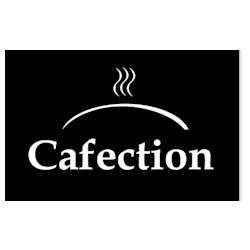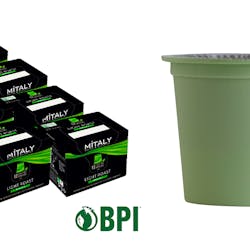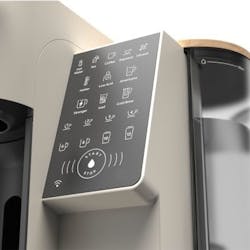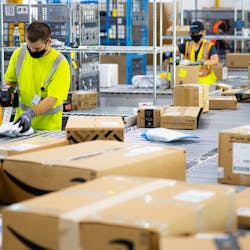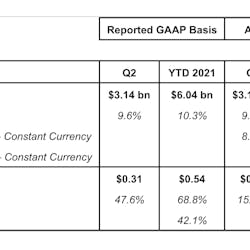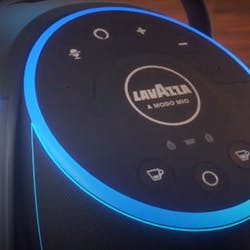As the trend of single-serve coffee machines has begun sweeping through commercial campuses across North America, office coffee service (OCS) operators are capitalizing on the bean-to-cup opportunity — oftentimes increasing their profit margins in the process.
“In the last decade, coffee lovers have been asking for better coffee at work,” said Mike Cochrane, vice president sales and business development at Cafection. “Drip coffee options are too limited for today’s consumers and represent old-timer coffee experience. With bean-to-cup, you get to experiment with new drinks while participating in a sustainable industry that produces less waste.”
Bean-to-cup is generally lower in price than single-serve cartridges. Plus, sleek designs and engaging touch-screen user interfaces make the equipment fun and easy to use. Perhaps that’s why, according to Automatic Merchandiser’s OCS State of the Industry Report, OCS operators named bean-to-cup as the brewing opportunity that will increase sales growth the most.
A big driver of bean-to-cup demand is labor cost. According to Karalynn McDermott, senior vice president of market development for BUNN, corporate campuses want equipment that is accessible to employees so they can make their own drinks, thus reducing the need for cafeteria staff.
“Campuses also want to address employee interest in snacking,” McDermott adds. “Campuses want to make beverages more available throughout the day.”
Cochrane says his experience has shown that coffee consumption will often increase once a campus switches to bean-to-cup. “This is because the coffee is so good,” he said. “No one is leaving the office for coffee anymore.”
Over the past three years, coffee equipment maker Bravilor Bonamat has seen year-over-year growth in the high double-digits for its bean-to-cup brewers. Continued growth is anticipated. “Our latest equipment developments are focused on offering a smaller, quicker and easier-to-operate bean-to-cup platform, with an emphasis on the 10- to 50-person office,” said Arjan de Groot, vice president.
Making the pitch to clients
Bean-to-cup might not make sense for all campuses. It is the OCS operator’s job to help figure that out. Any decision typically revolves around how much fresh coffee is desired at different times throughout the workday.
“If there’s an office of 75 people, how many are really going to want coffee at 4 p.m.?” McDermott asks. Well, the likelihood has shot up as more young people continue entering the workplace. “More Millennials are looking for coffee, both hot and cold, all day long,” McDermott said.
If it is established that bean-to-cup is a good way for a campus to go, OCS operators should initiate conversations regarding the types of drinks the campus would like to serve. “It sounds basic, but there are many ways you can go in the bean-to-cup category, such as espresso-based or drip,” McDermott points out. Additionally, a campus may want to offer decaf, different bean origins, and milk- or powder-based drinks such as mochas or lattes.
Display-based content is another potential discussion to have. “Some of our clients [OCS operators] like to have company videos shown on the touchscreen display units,” McDermott said. Other OCS operators like to show information about the coffee itself such as origin and roasting technique. Whatever the case, some of today’s innovative bean-to-cup equipment helps make for a better customer experience.
Creating a good, lasting customer experience with bean-to-cup might not happen overnight, however. “If you are new to bean-to-cup equipment, patience is the first thing to practice,” said Eric Covelli, Bravilor Bonamat’s sales manager for the central zone.
First of all, OCS operators must take time to learn the equipment. “Your vendor should provide hands-on training to your technicians and route drivers,” said Debora Mehlert, Bravilor Bonamat’s office manager. Operators must also exhibit patience with customers as they establish a process for equipment cleaning and maintenance. “Your vendor should be able to provide you with guidelines and videos to assist with this,” Mehlert said.
A proper site survey of the installation location is important. Heights, widths, power, water, filtration, etc. need to be discussed prior to installation. “The devil is in the details,” Mehlert said. “Your vendor should be able to provide a site survey form that can be used by both your sales force and technicians.”
One misconception many OCS operators have is that changing bean types on the fly can be done without setting adjustments. “Since you are dealing with whole beans, changing beans can affect the taste profile and machine performance,” Covelli points out. “Setting the proper grind particle size and other brewer settings is critical to achieving the highest in-cup quality.”
Equipment options
Campuses have a few ways to go if choosing the bean-to-cup method. That decision largely hinges on the coffee preferences of the campus and its employees.
Bravilor Bonamat’s de Groot says most bean-to-cup brewers have either a vacuum brewing process (reverse French press) or an enclosed pressure-brewing process. Depending on the type, you can dispense a regular flat black coffee or a traditional espresso shot topped with crema. From there equipment can have either single or multiple grinders, soluble canisters for powder additives, and many different software interfaces. “There’s also a diverse range of volume [yield], sizes and prices for different applications,” de Groot added.
Once a style of coffee maker is decided upon, OCS operators can start evaluating different brands, models and features. “A bean-to-cup machine is complex, and better machines tend to last a lot longer,” Cafection’s Cochrane said. “One bad investment can double or triple your buy-in costs.”
Along with durability, BUNN’s McDermott says it’s all about the beverage quality that dispenses into the cup. “Some of the best and most important features give users the ability to really dial into the body of the coffee beverage,” she said.
The OCS operator needs the ability to get the correct coffee-to-water ratio in order to brew the desired strength. “You also want some control over the extraction process so you can get the body of coffee you want to deliver,” McDermott adds.
Espresso-based bean-to-cup machines, such as BUNN’s Sure Tamp, can also make drinks such as cappuccinos and lattes using real milk. The company’s Crescendo is also espresso-based, only this machine mixes with powders. BUNN’s Sure Immersion makes two or three types of drip coffee and also mixes with powders.
Cafection’s Encore 29 brewer can provide up to 18 different drink combinations using a choice of three coffee beans and three solubles. “An offer of three-bean is important,” Cochrane said. “You cannot overlook the fact that there are decaf drinkers, so one blend should be a decaf. In order to pull through that product, you can default your indulgence drinks to pull from the decaf bean since they are choosing those drinks for flavor and not caffeine.”
Cochrane says something to scrutinize is cup size and gram throw. Some bean-to-cup brewers are limited to gram throws that will require a double infusion for a 12-ounce or larger cup. “This limits your ROI because of the duration of the double infusion,” Cochrane explains.
At the end of the day, bean-to-cup equipment must be easy to program, operate and clean. Equipment should also provide a more high-tech, engaging experience for users. “However, what we in the industry might find exciting and ‘cool’ with regards to displays and software, some end-users may find challenging or be intimidated by,” Bravilor Bonamat’s Covelli cautions. “Operators should look for the balance between advanced technology and a user-friendly, interactive experience.”
Equipment cleaning and maintenance
A very important discussion OCS operators should have with clients relates to bean-to-cup equipment maintenance. Someone on site will need to perform daily rinses, as well as bean loading and drawer emptying. The client needs to decide if it wants to handle this with internal staff, or outsource it to the OCS operator.
If the client chooses to handle maintenance internally, Covelli says it is important to get buy-in right from the get go. “If the technician is installing the equipment and it’s the first time the customer is exposed to the responsibilities of up-keep on the machine, that’s too late in the process,” Covelli warns. “We believe that the beginning of the sales process is the appropriate time to discuss cleaning and maintenance.”
Bravilor Bonamat recommends that a campus assign a person to cleaning tasks. The OCS operator can assist by providing hands-on training, leaving behind cleaning manuals, and demonstrating the relationship between proper cleaning and coffee quality.
On machines with touchscreens, picture-prompted cleaning reminders can help users visualize what needs to be done. Similarly, messages can remind users to empty the waste drawer or add more coffee beans. With features such as BUNN’s BUNNlink and Cafection’s Sophia, users can even have alerts and messages sent to their mobile devices.
“In today’s connected society, the Internet of Things must assist operators who manage a large fleet of units,” Cochrane said. “This is why Cafection started to connect the machine to a cloud software a few years ago. Sophia — Global Management System now helps operators to coordinate maintenance of their assets. Being able to monitor, manage and control brewers remotely is the future of the industry. Add customization capabilities and you get the perfect tool for the best responsive services that will attract more customers and stimulate users’ loyalty.”



